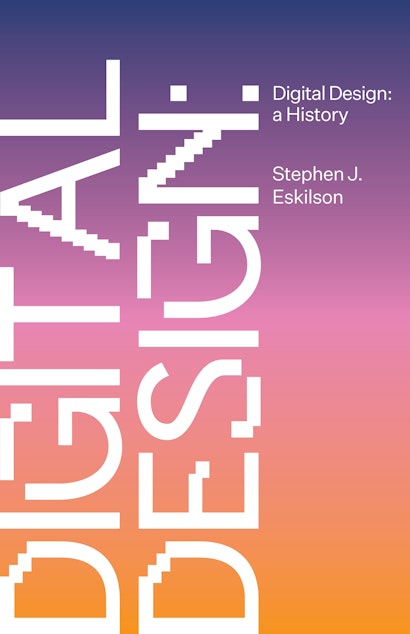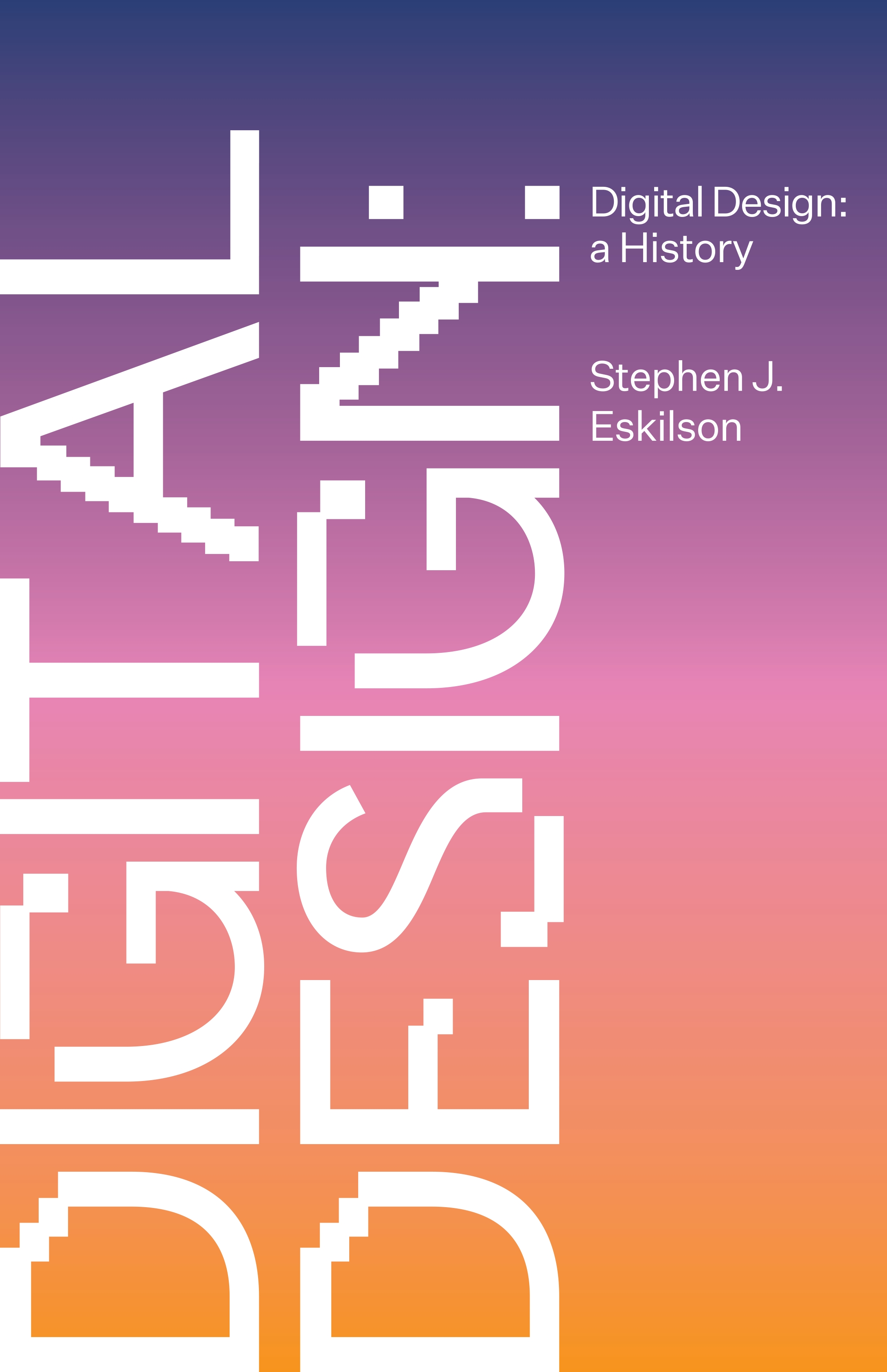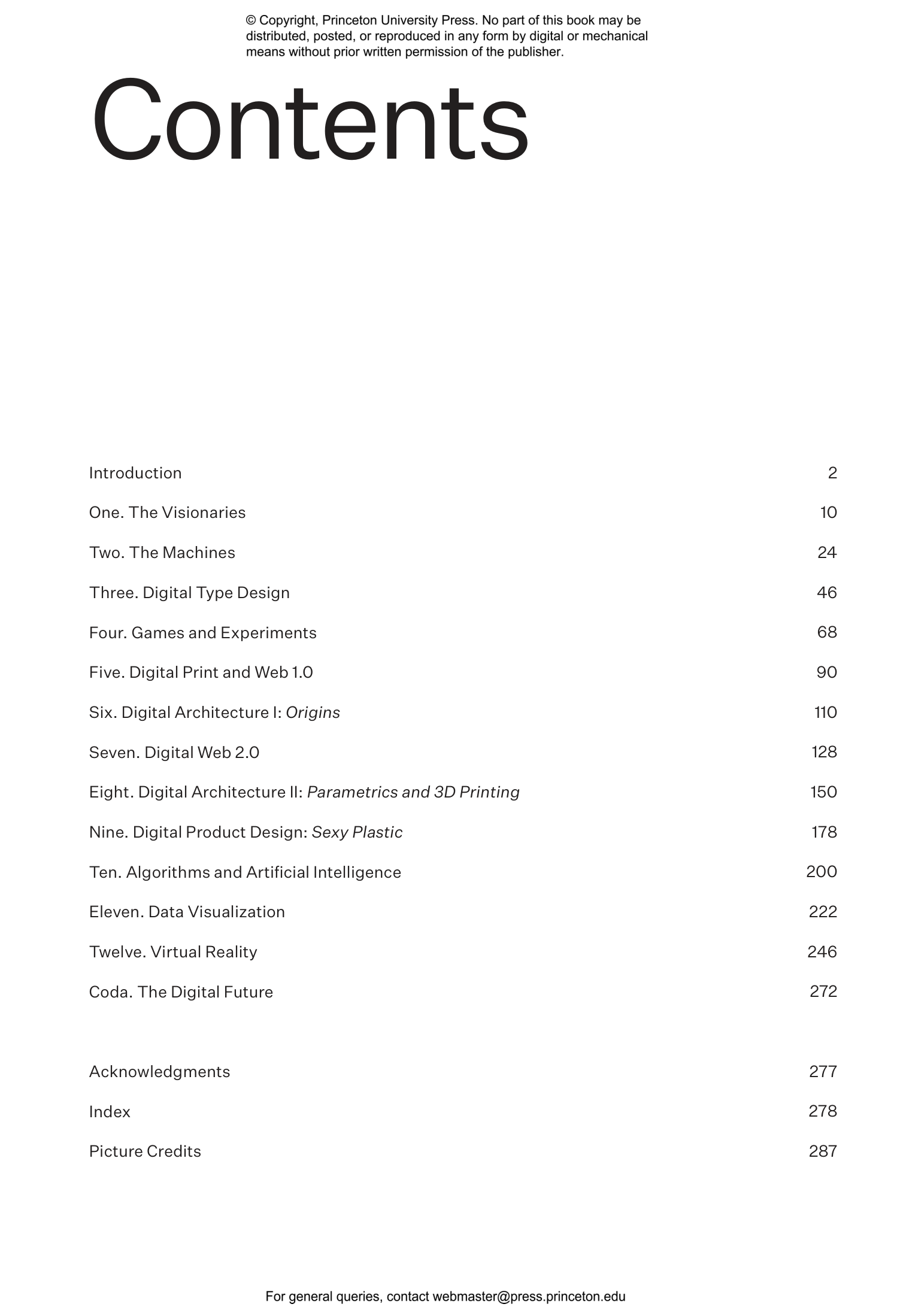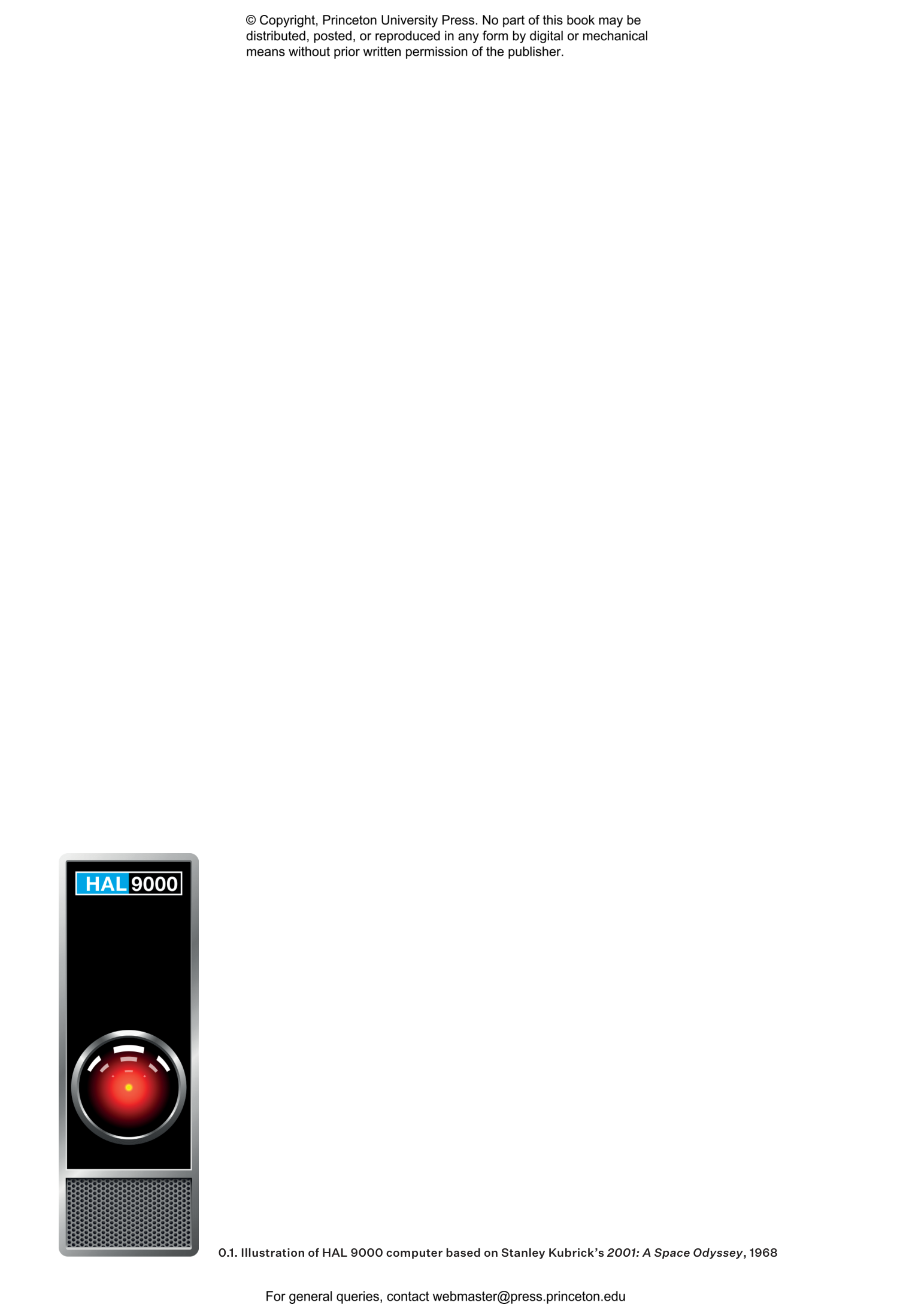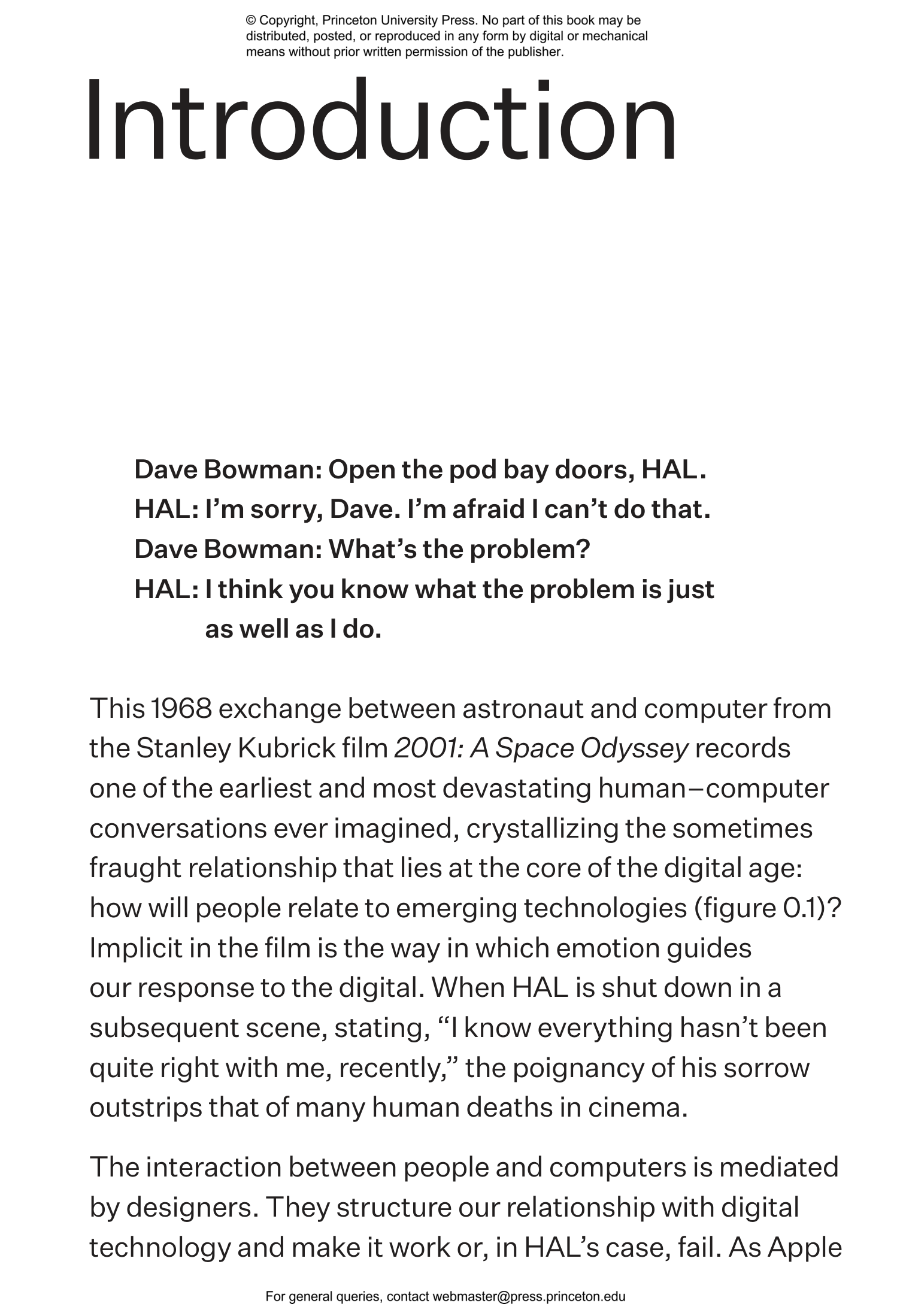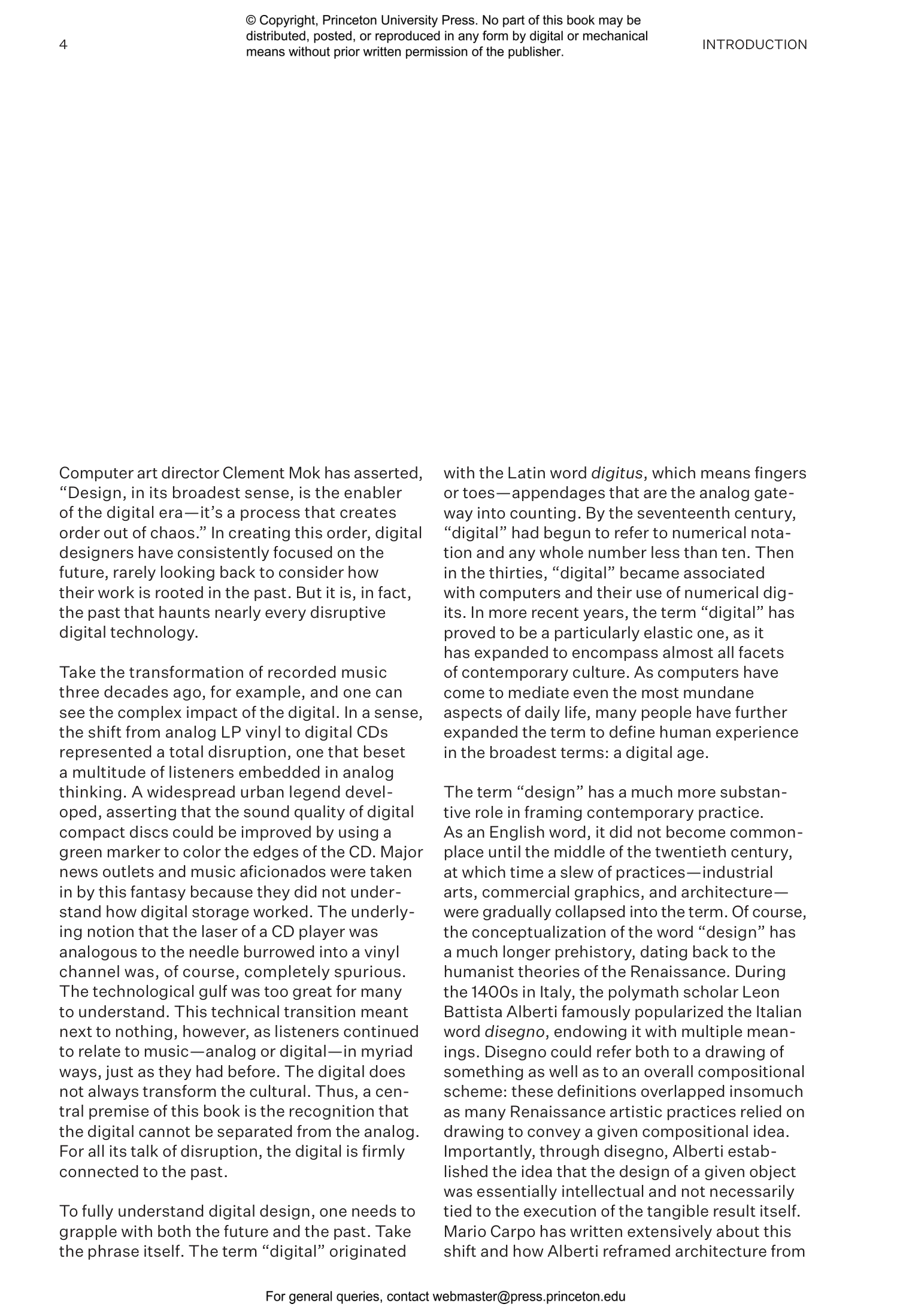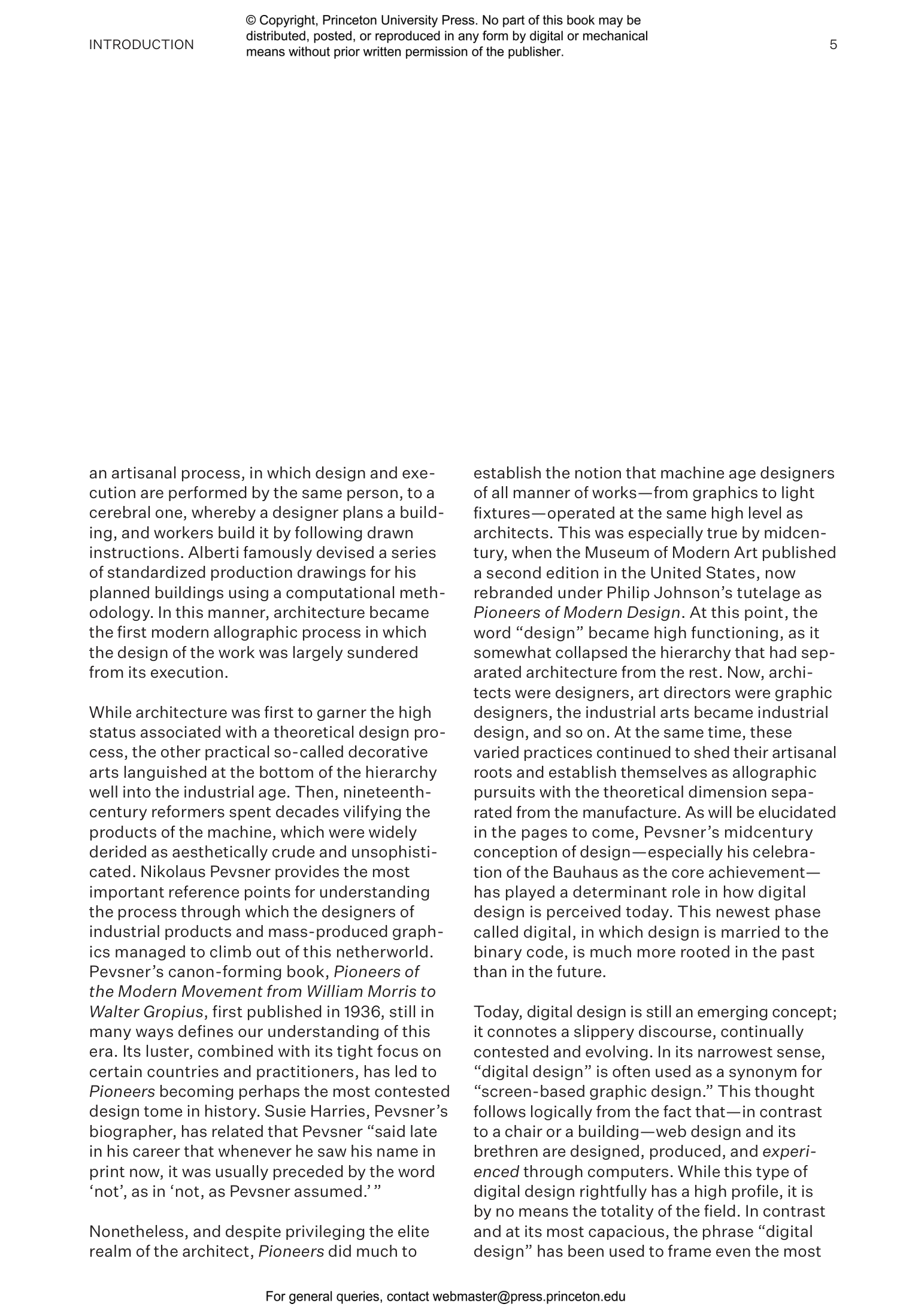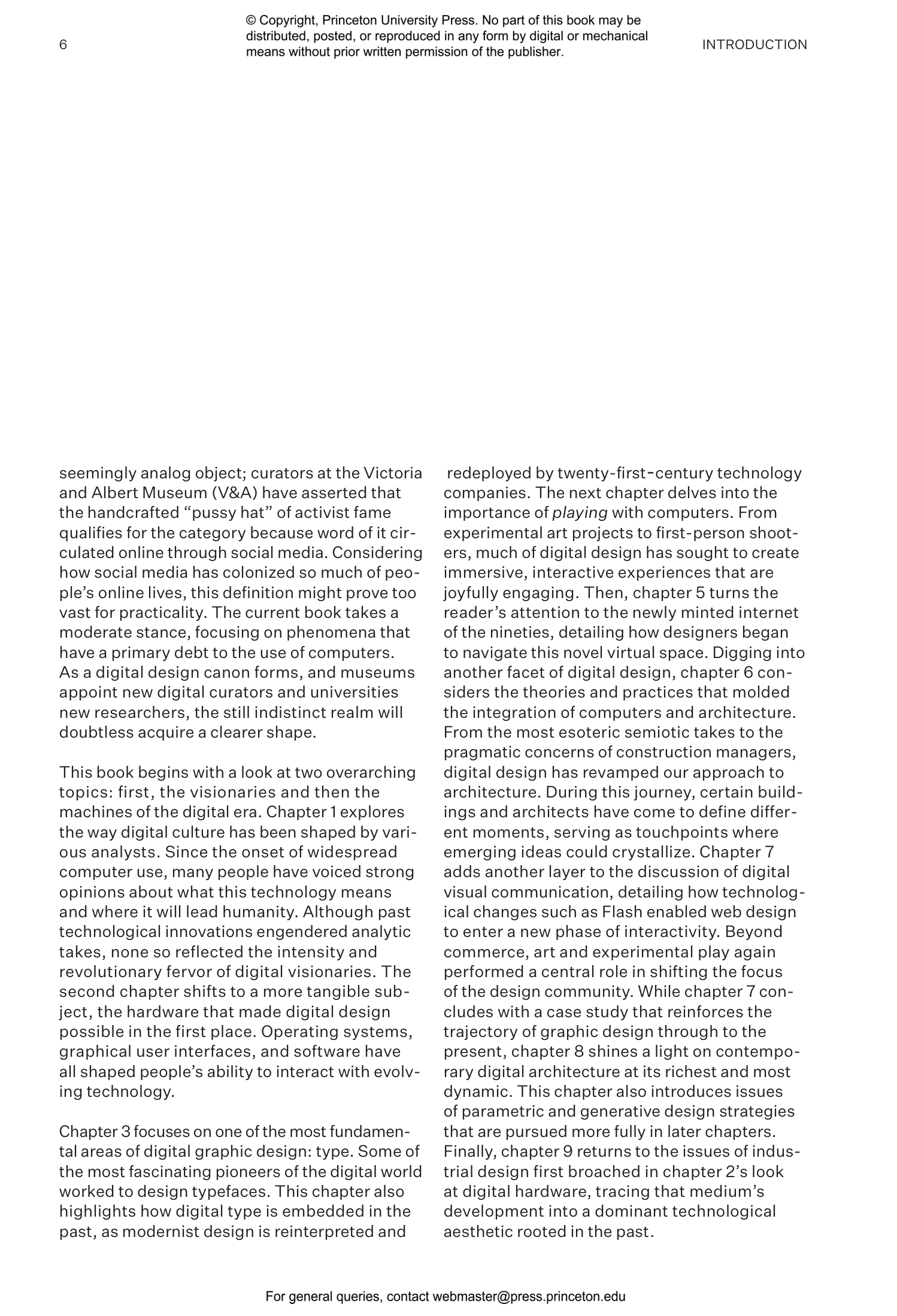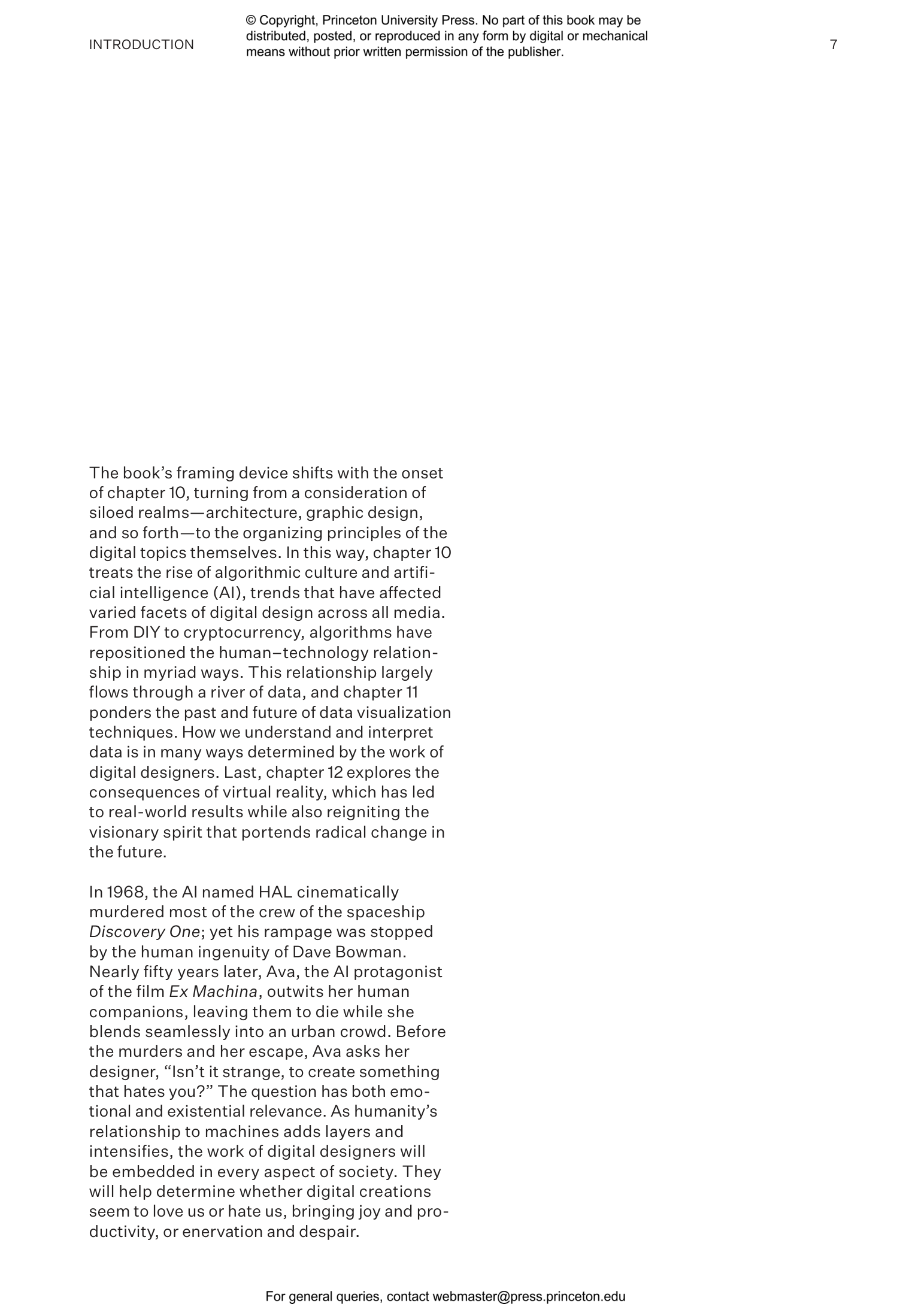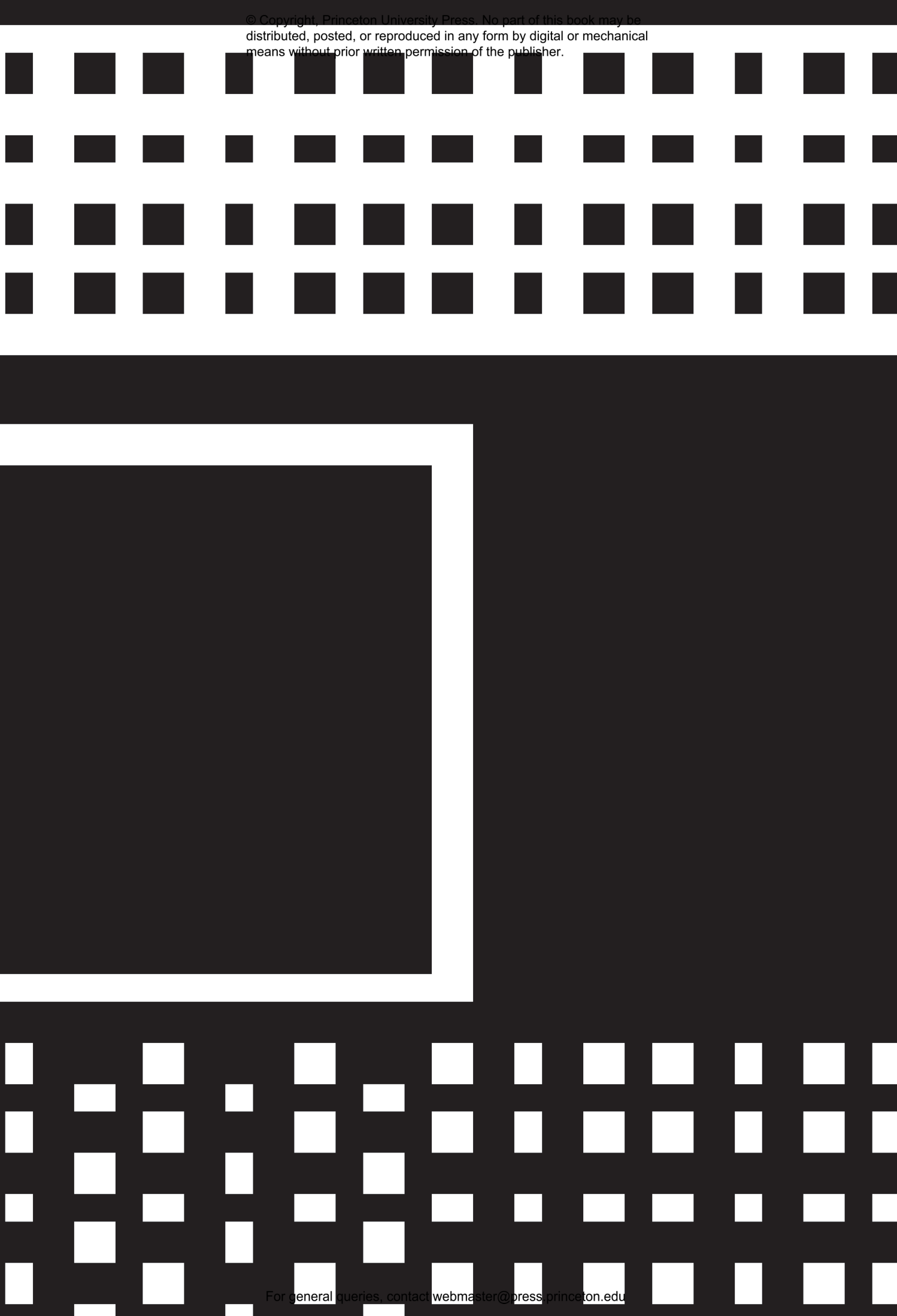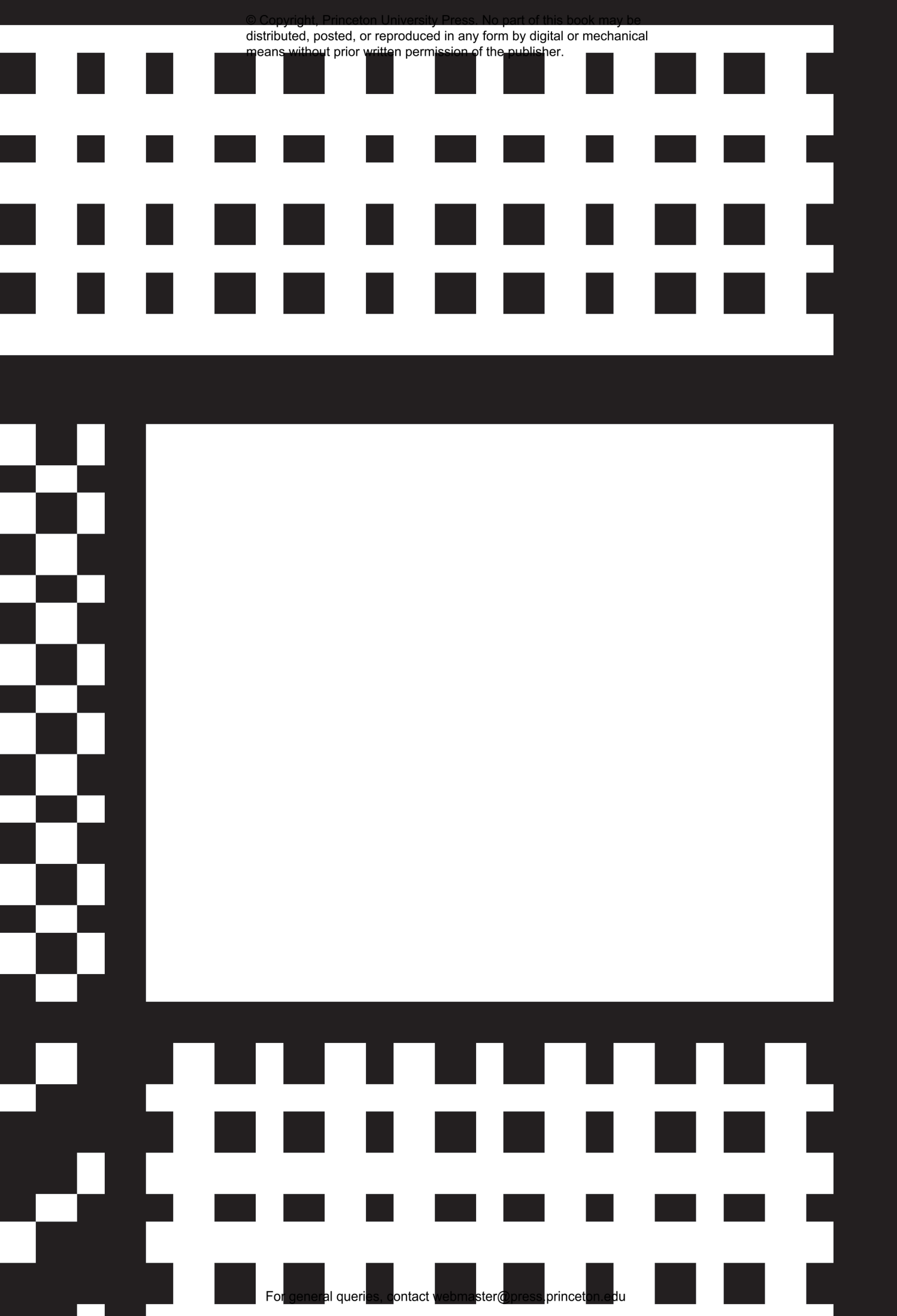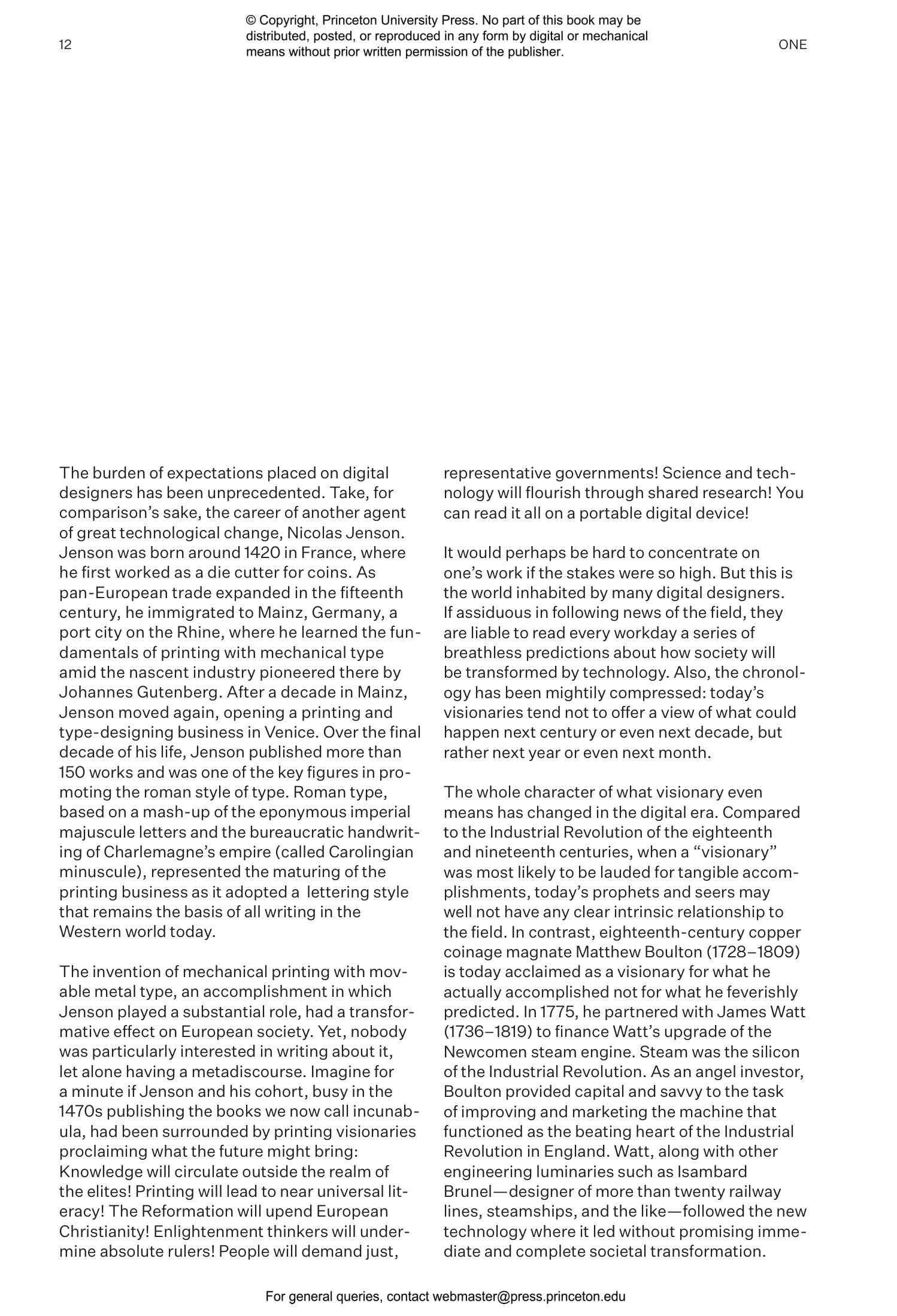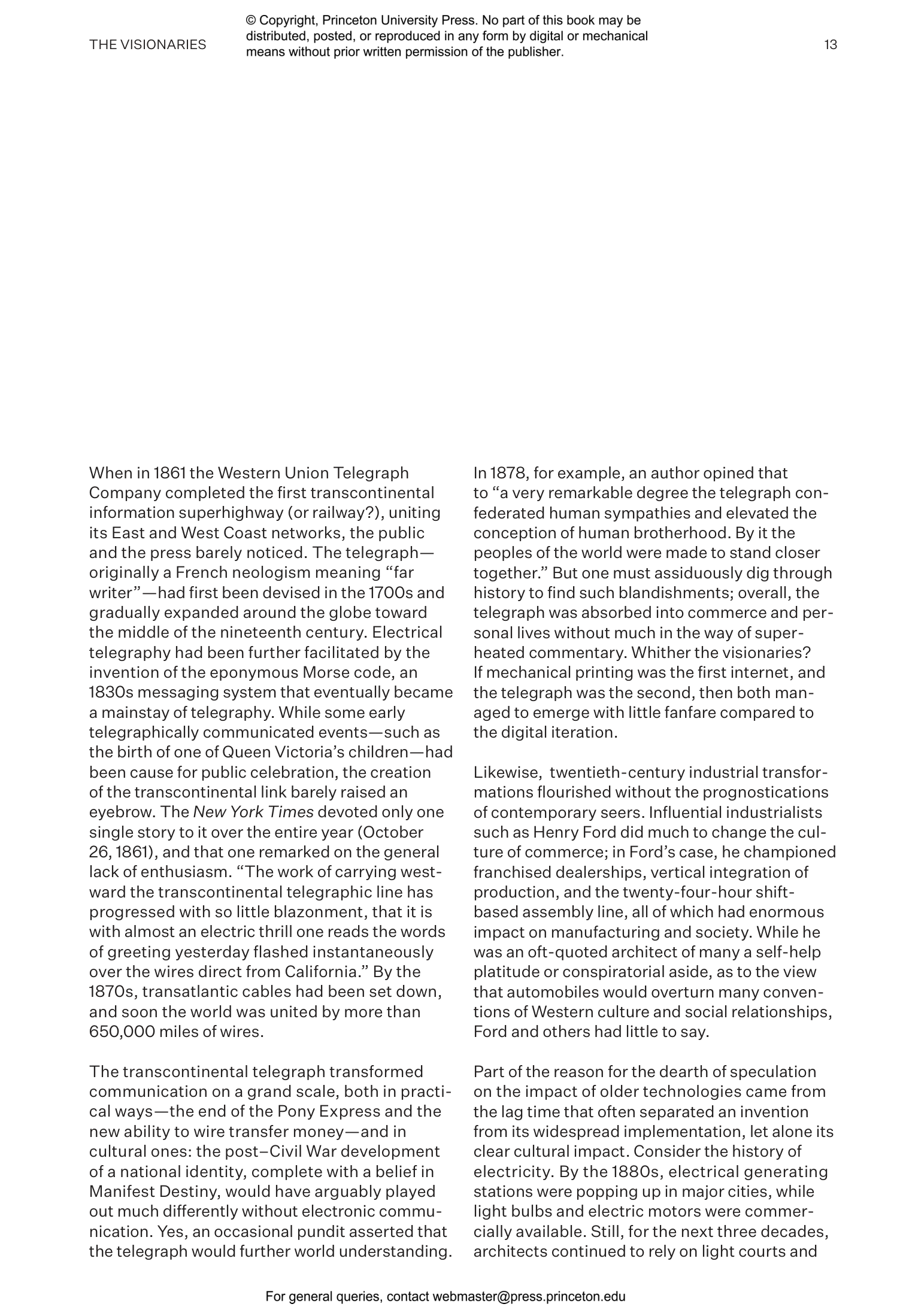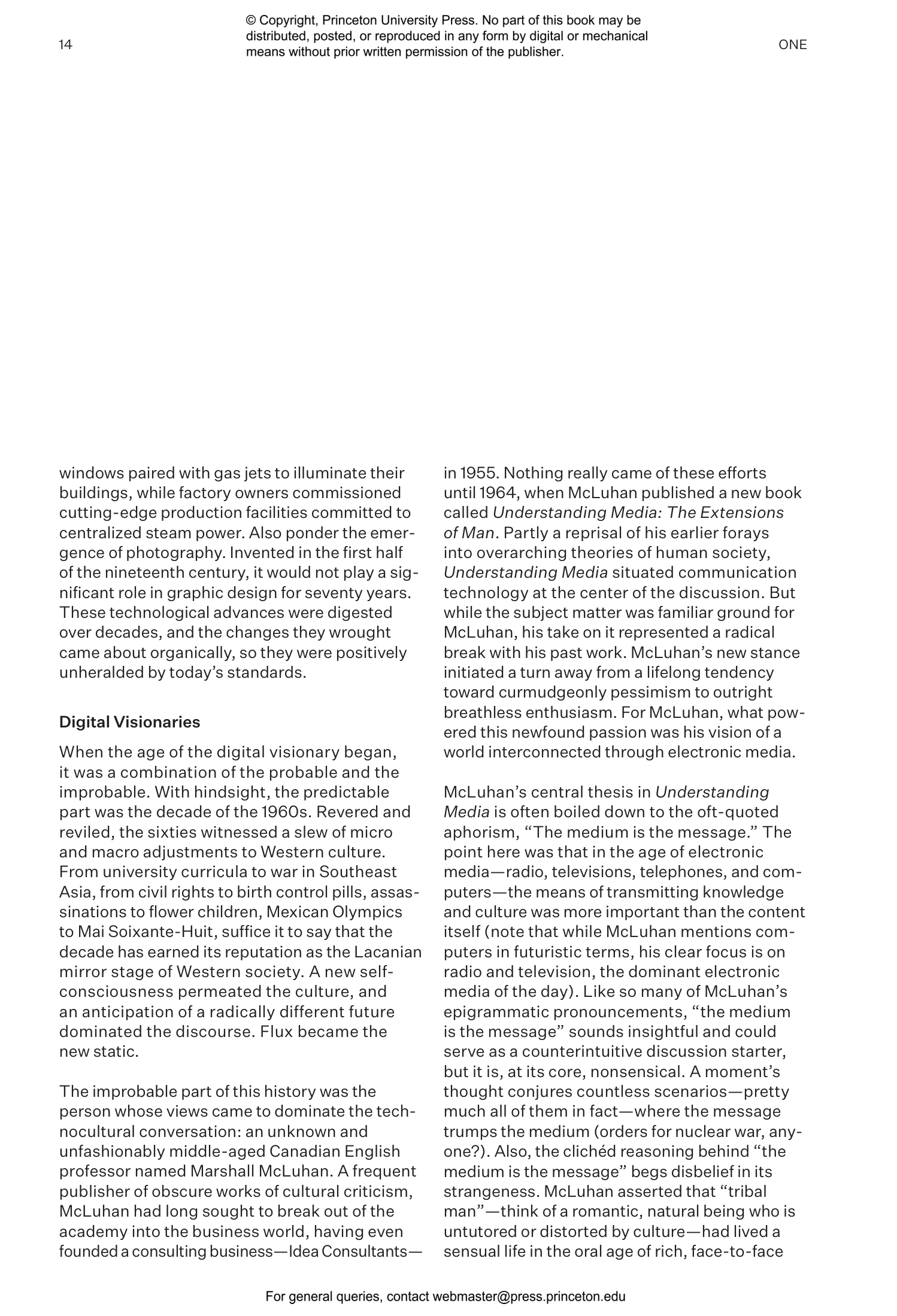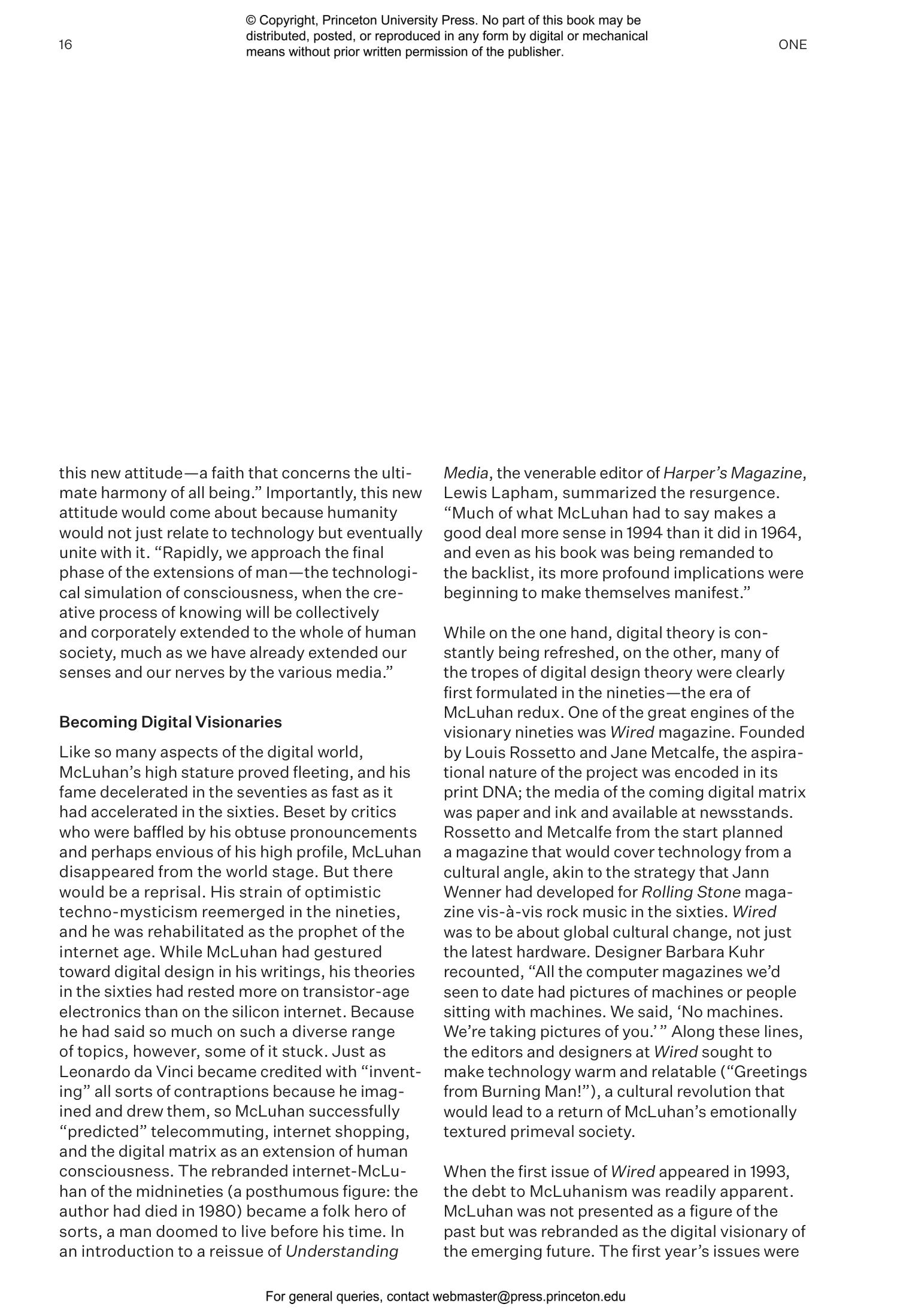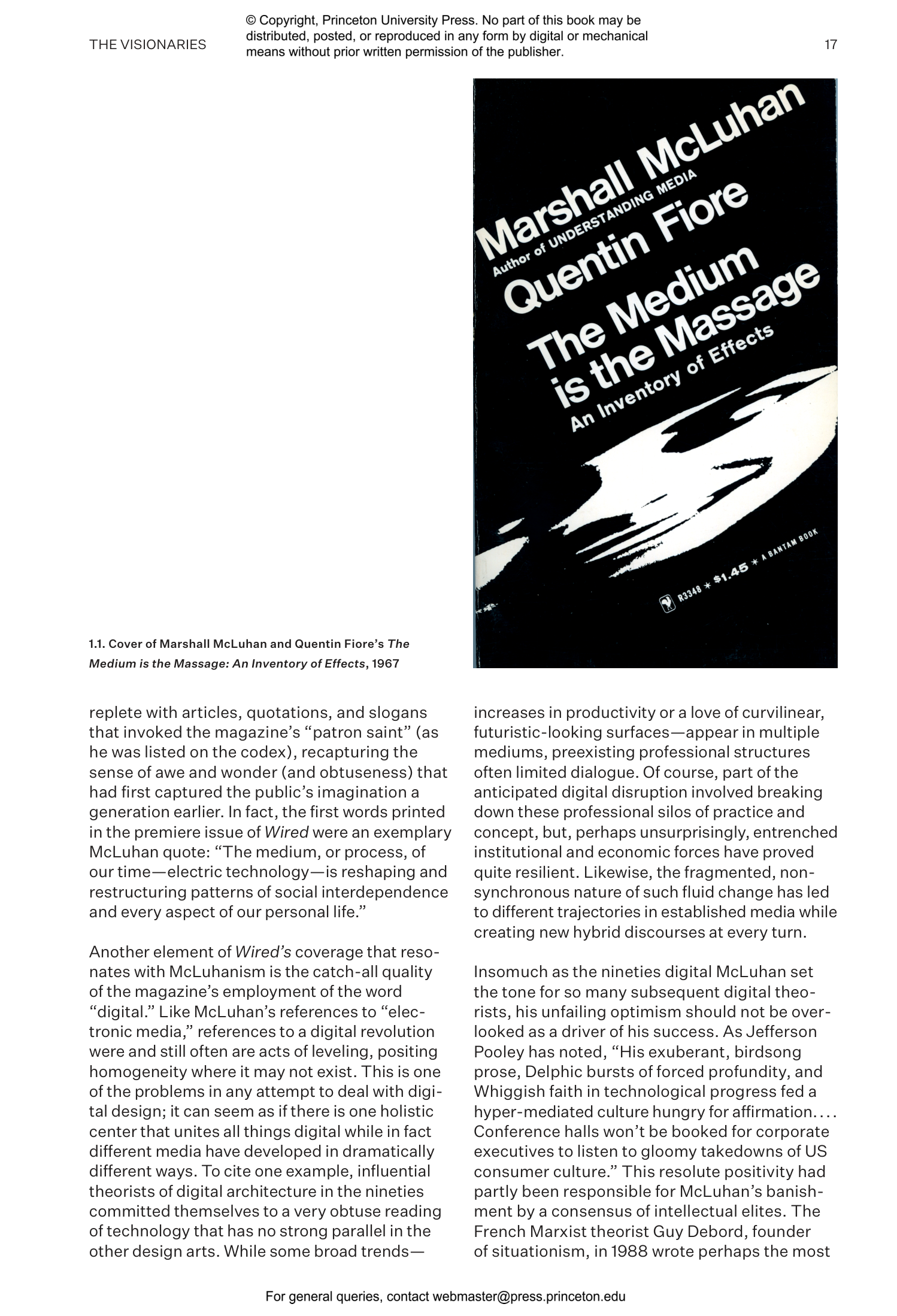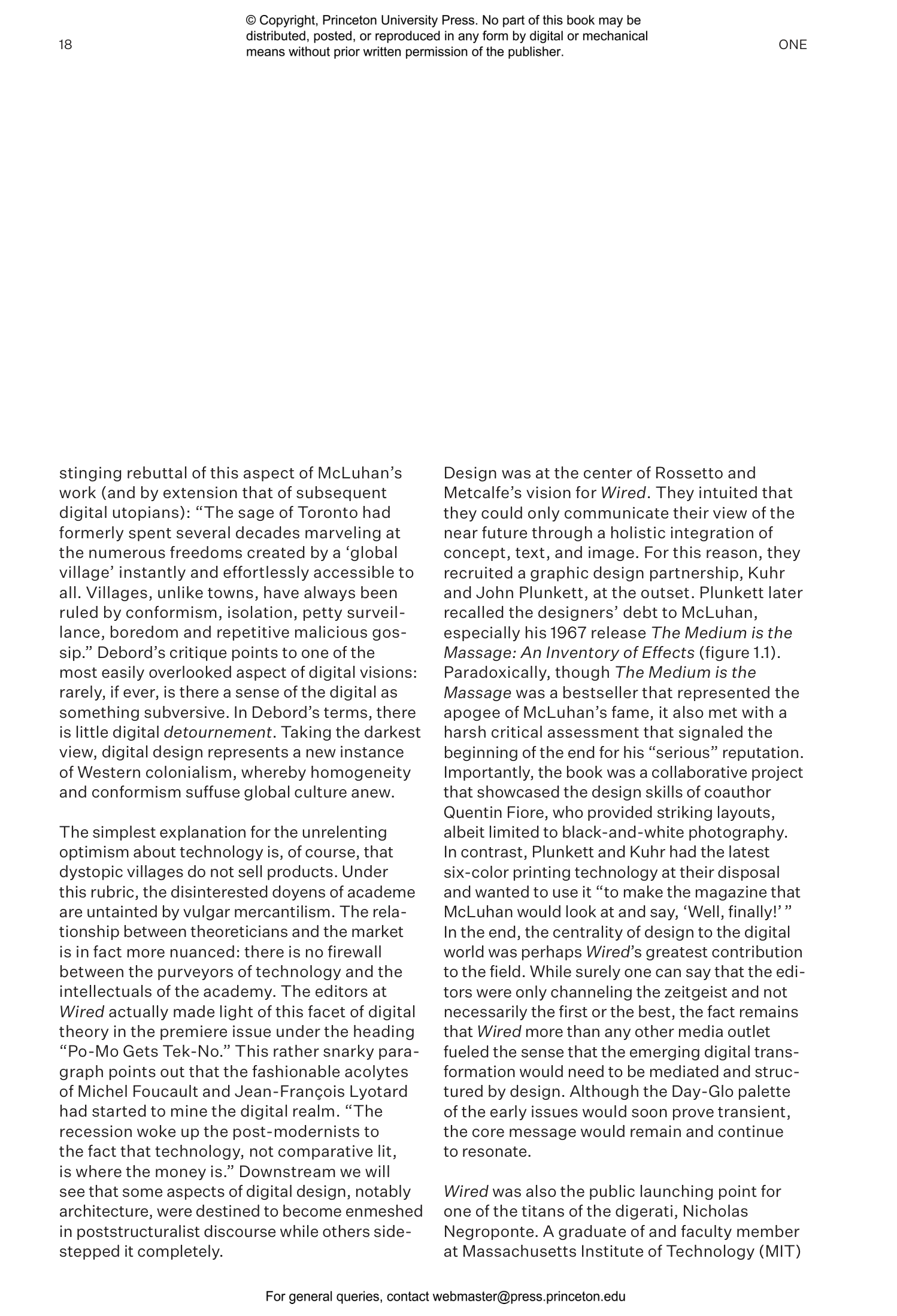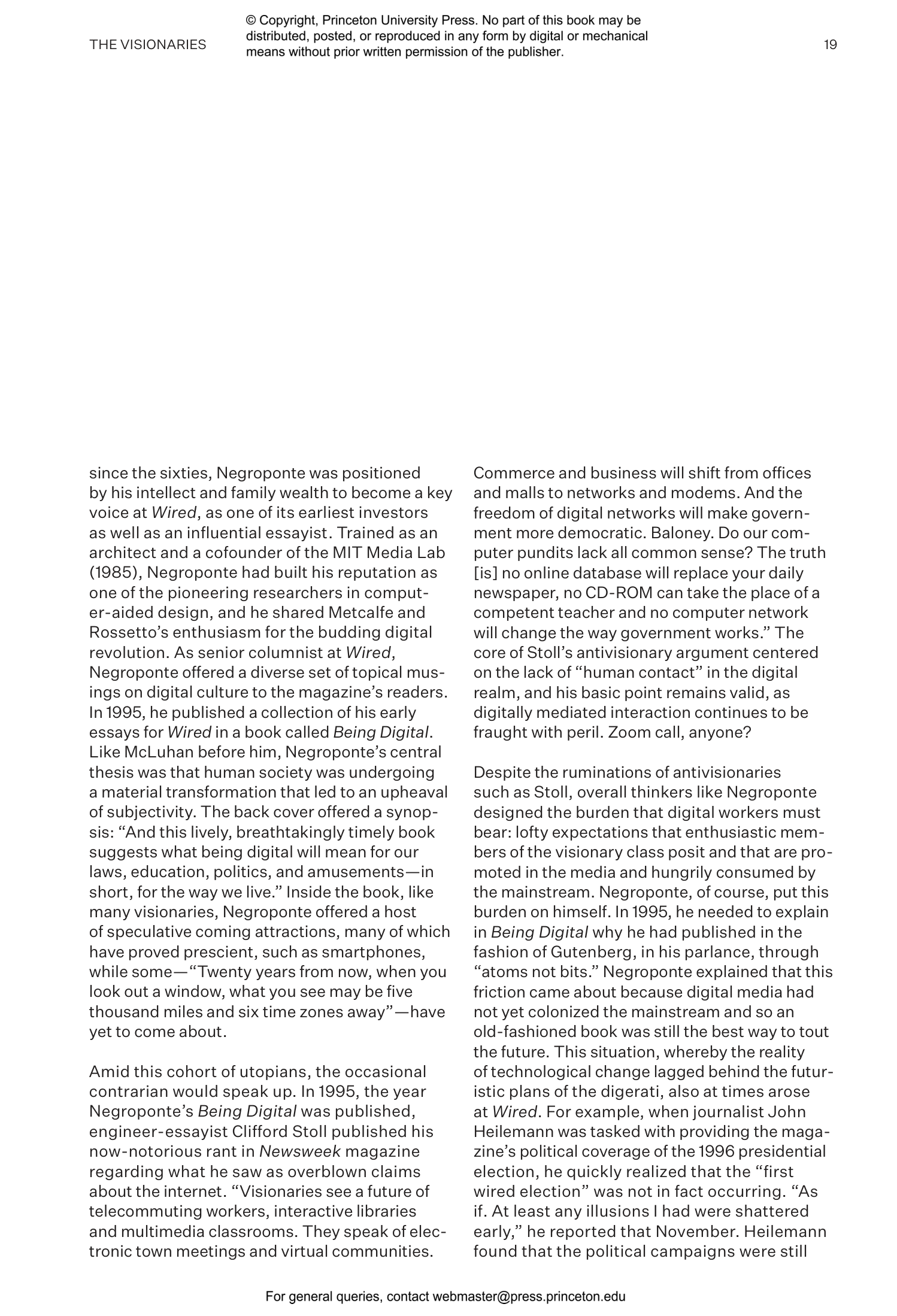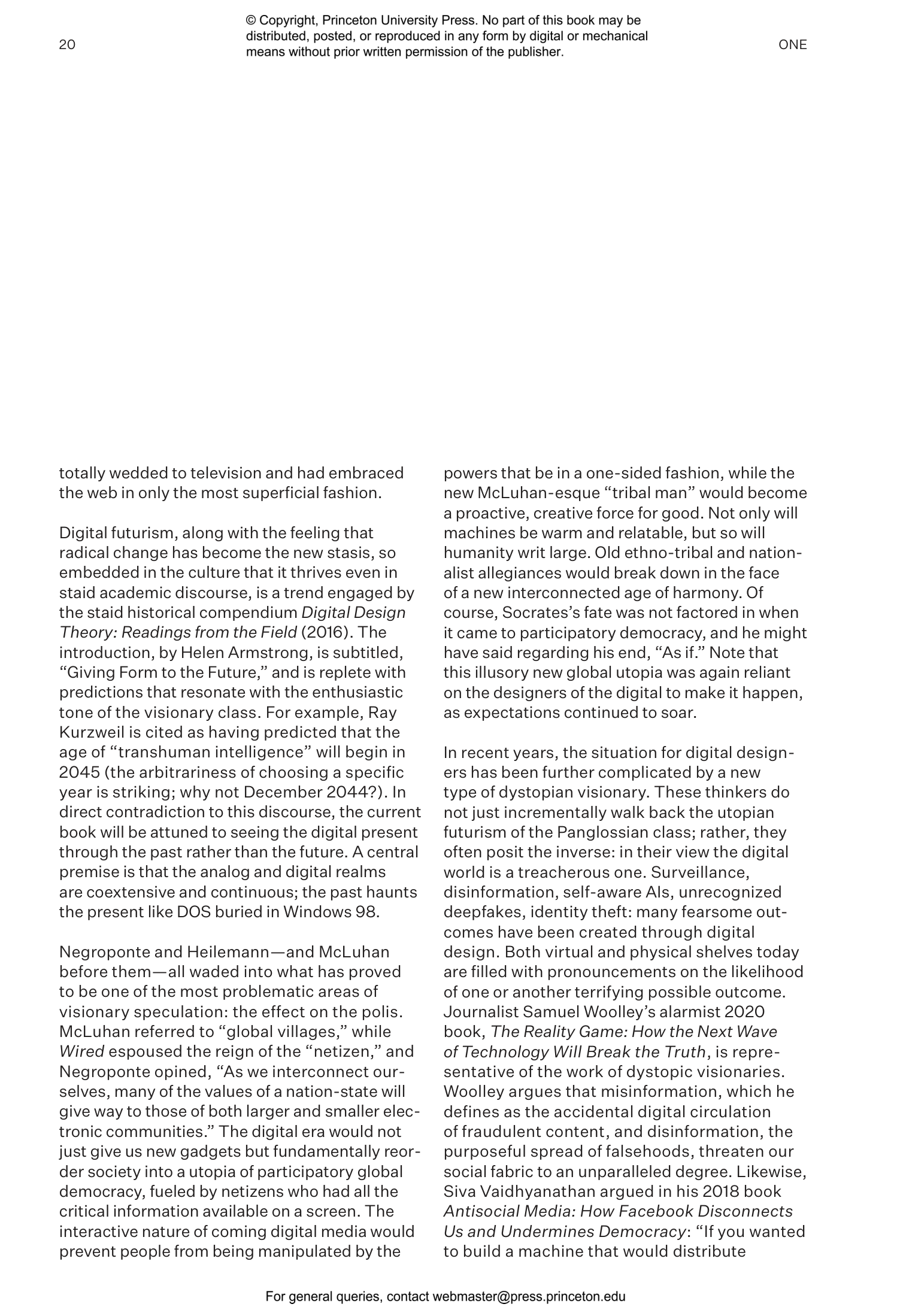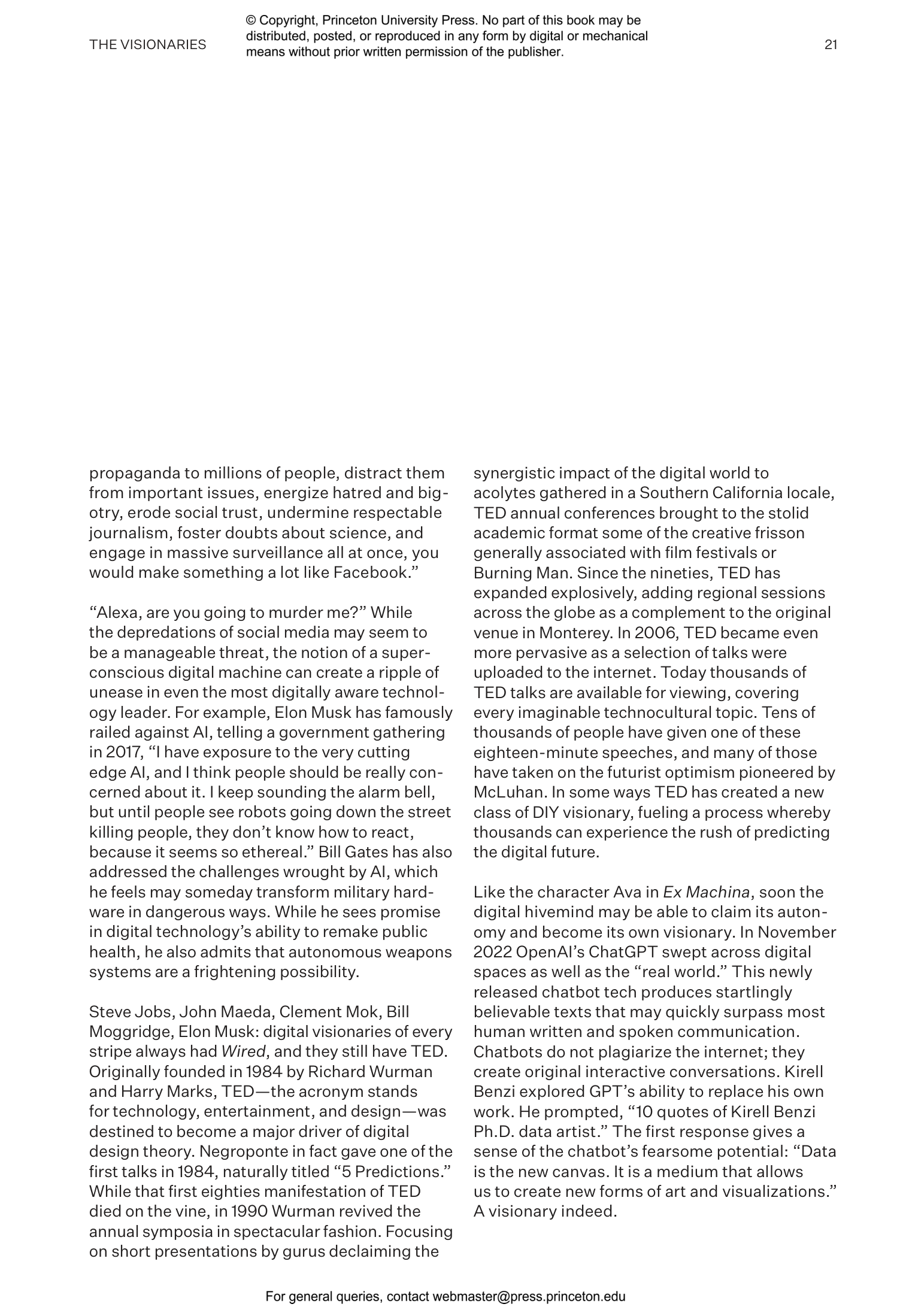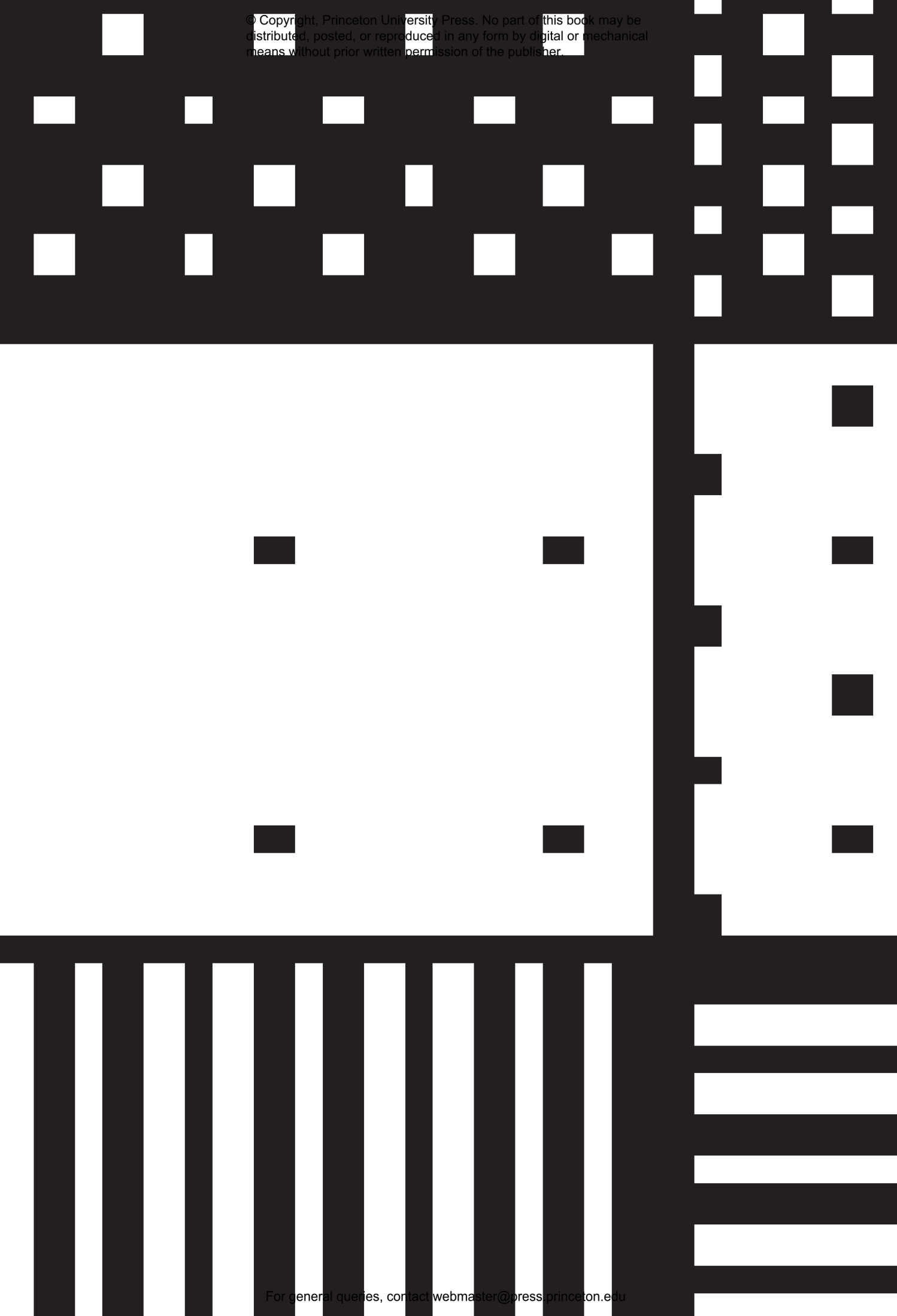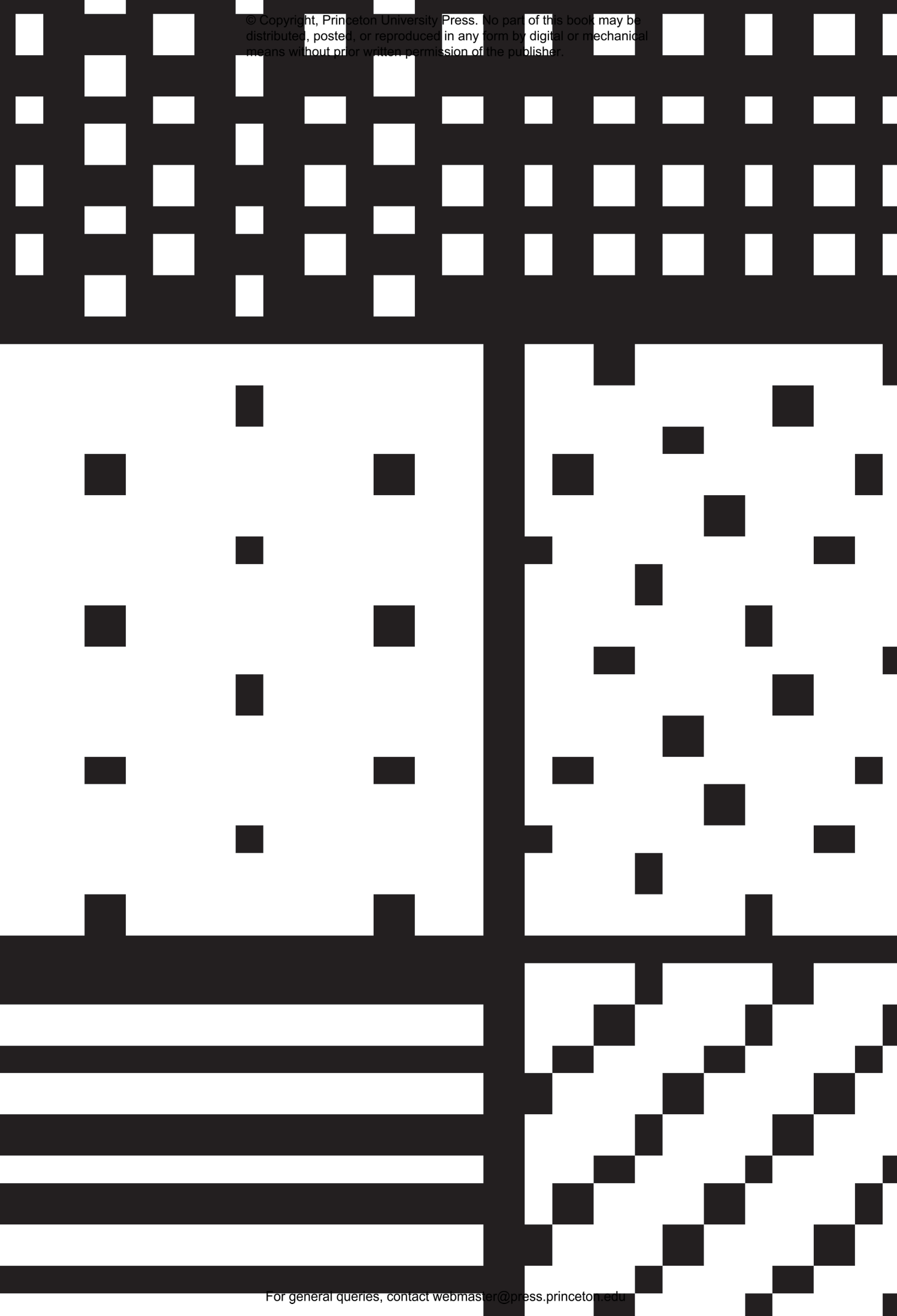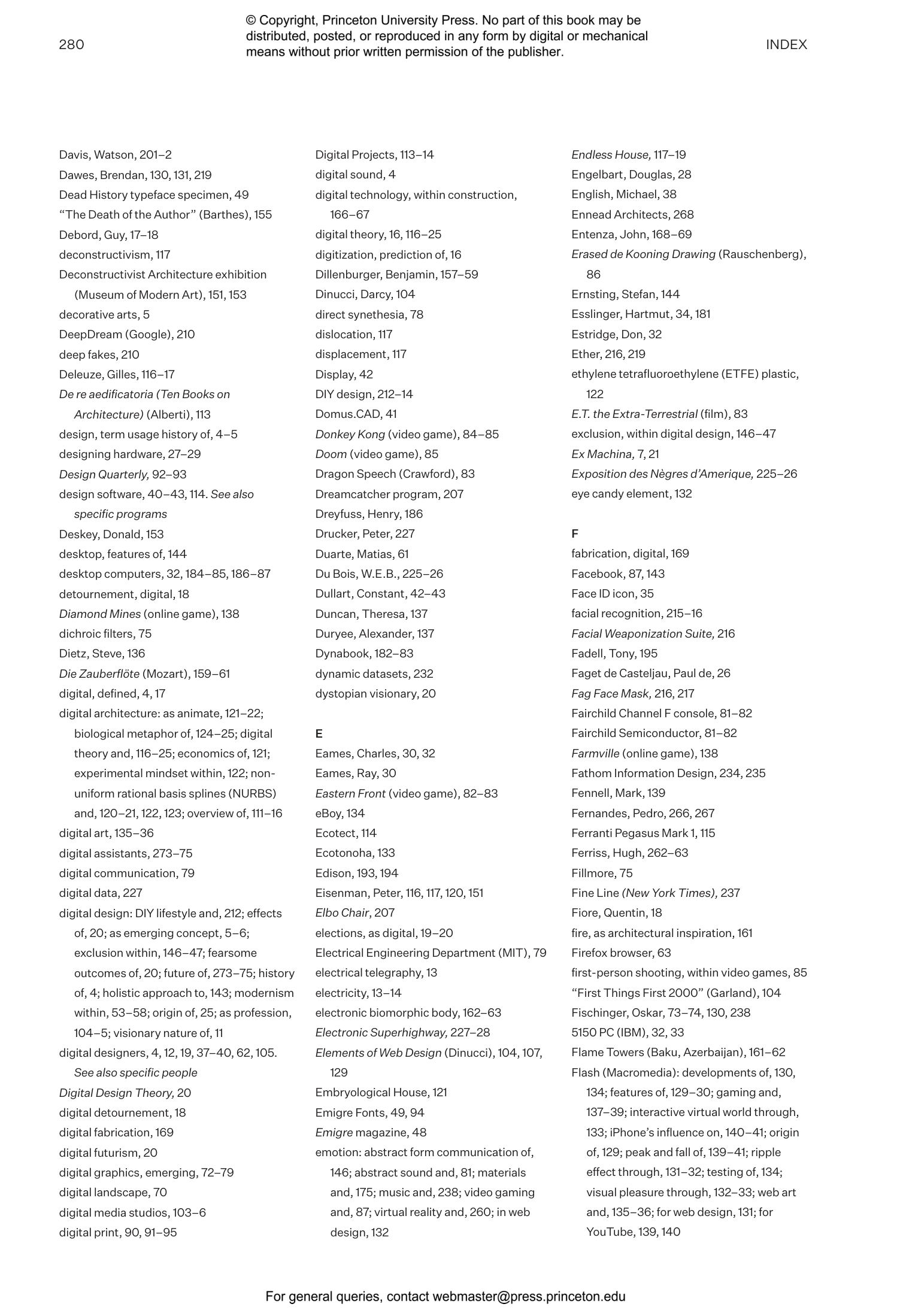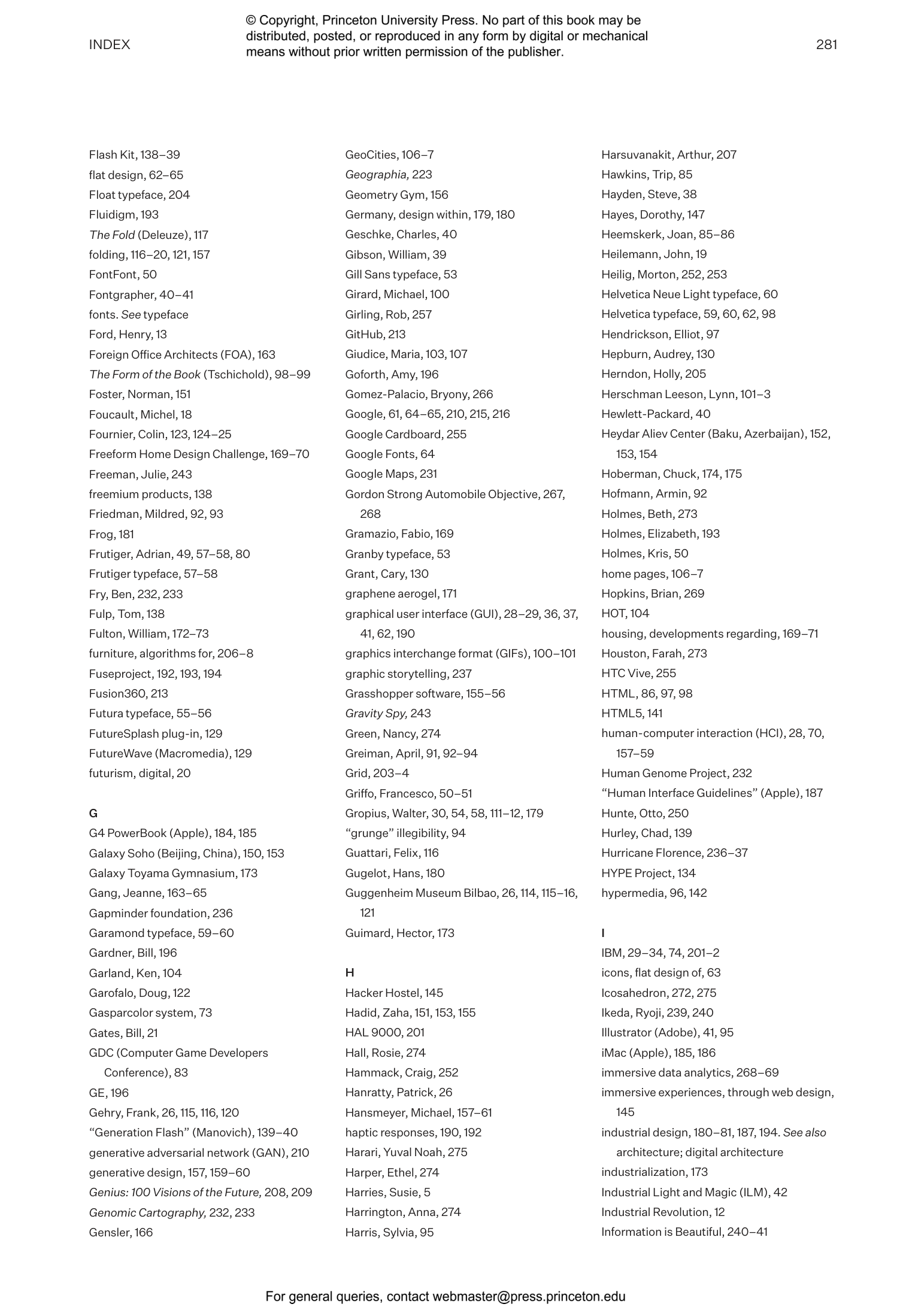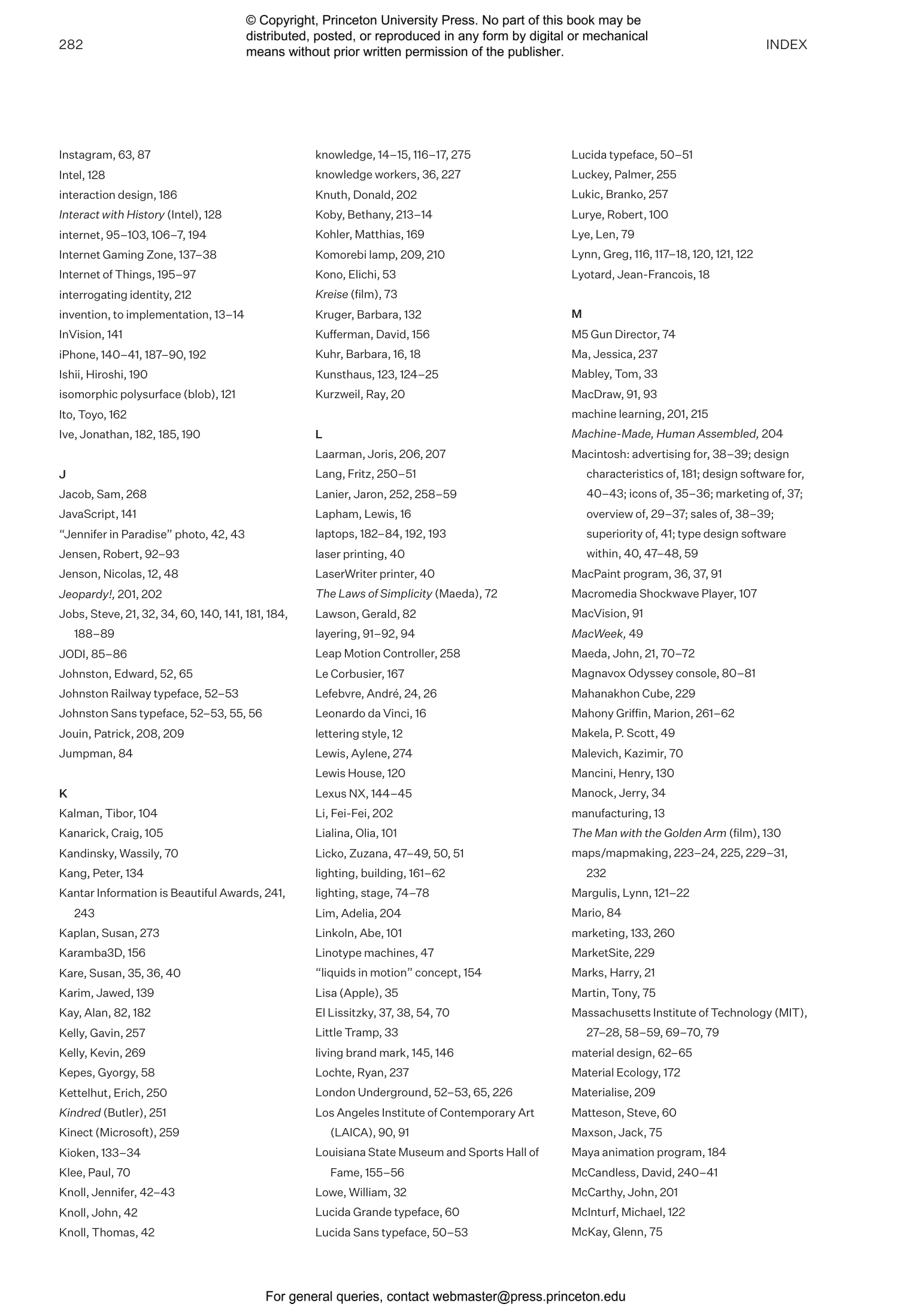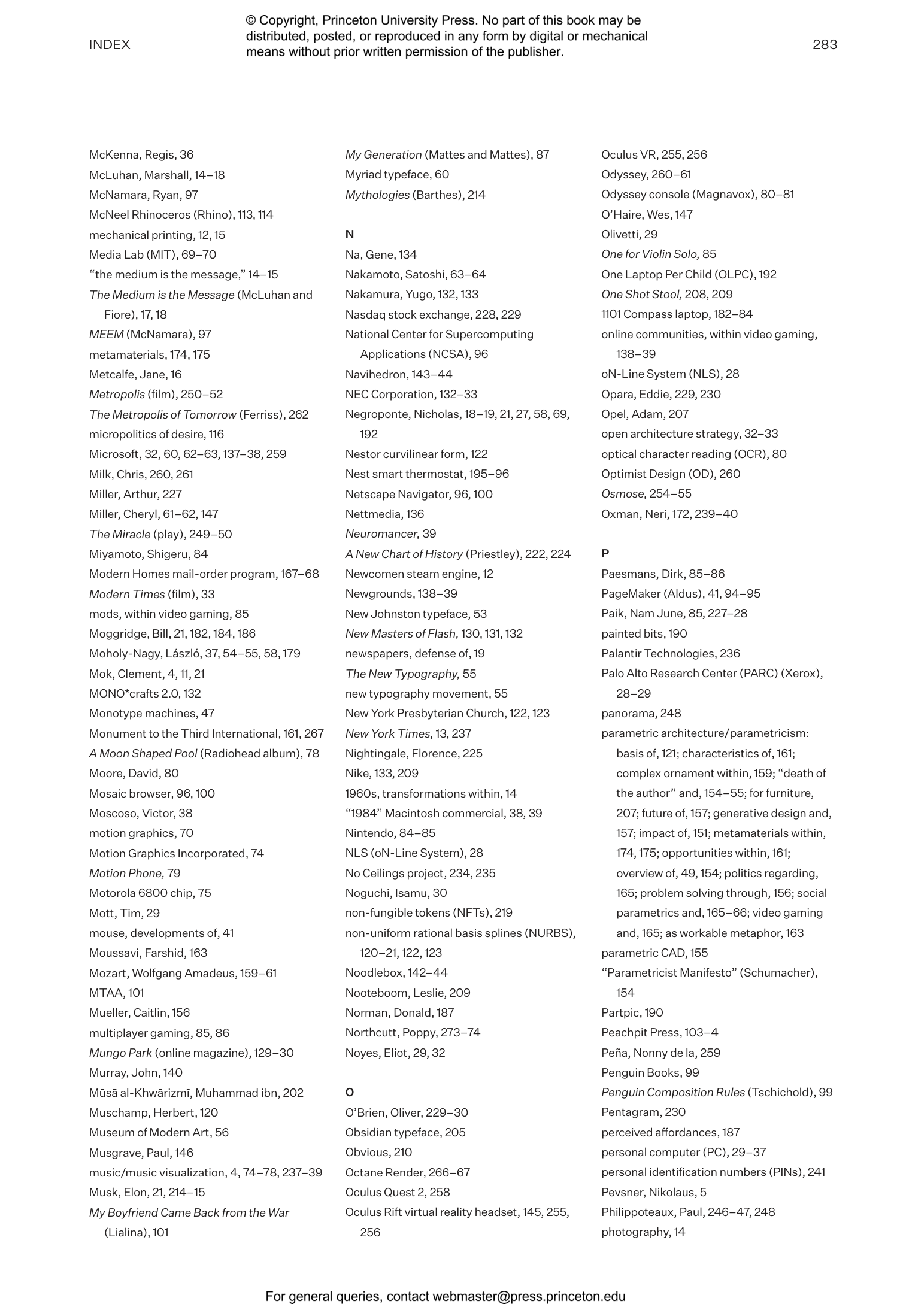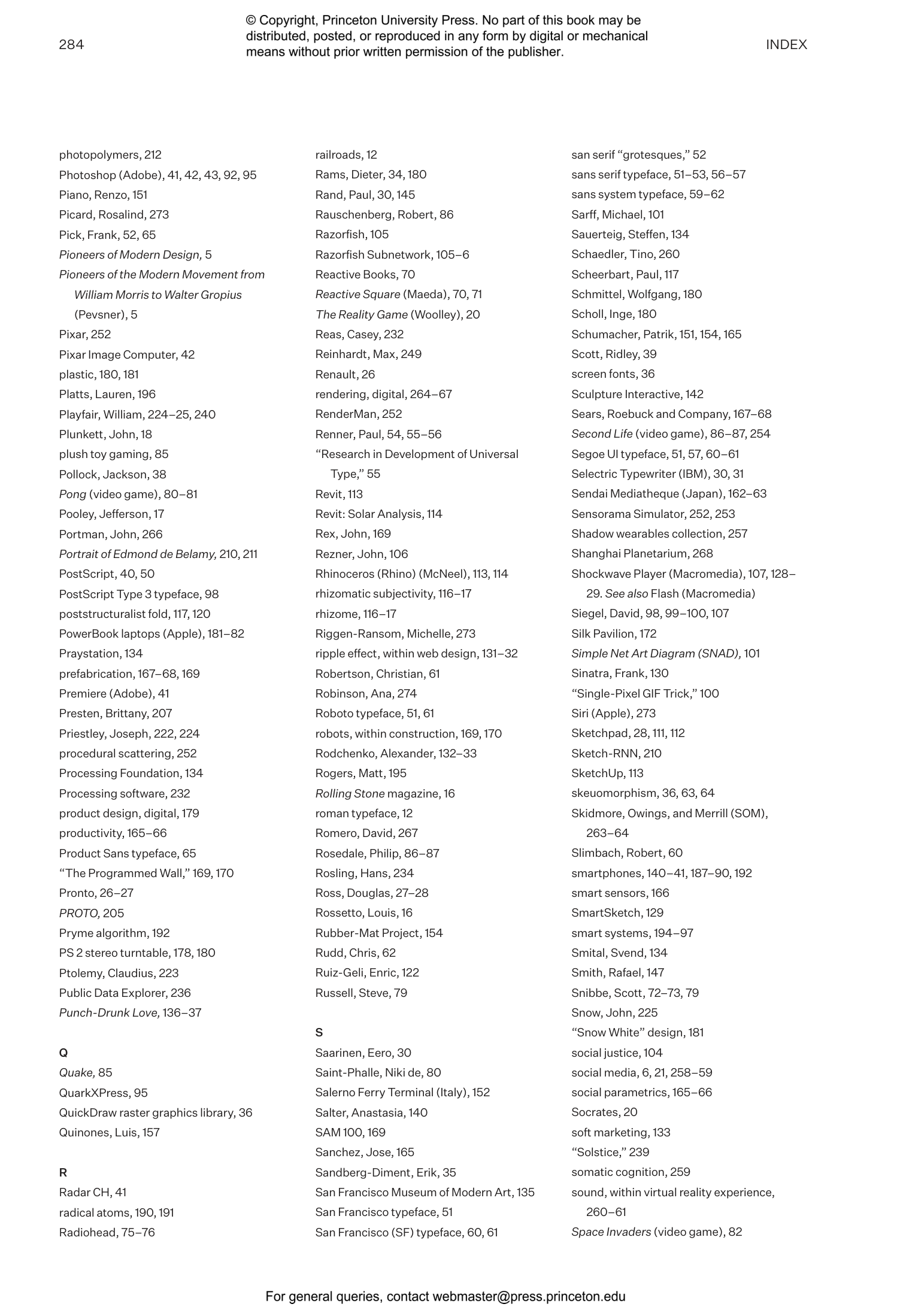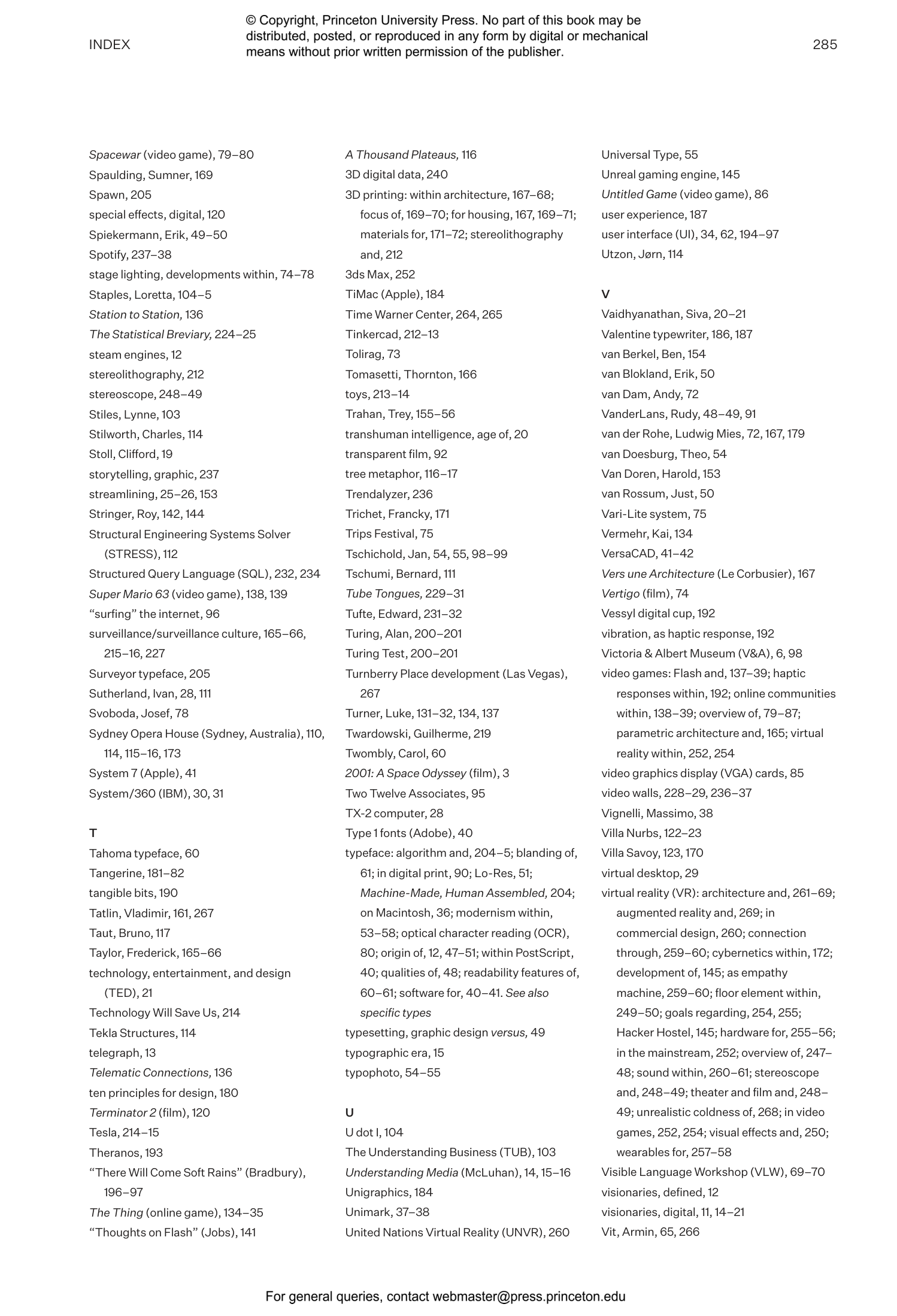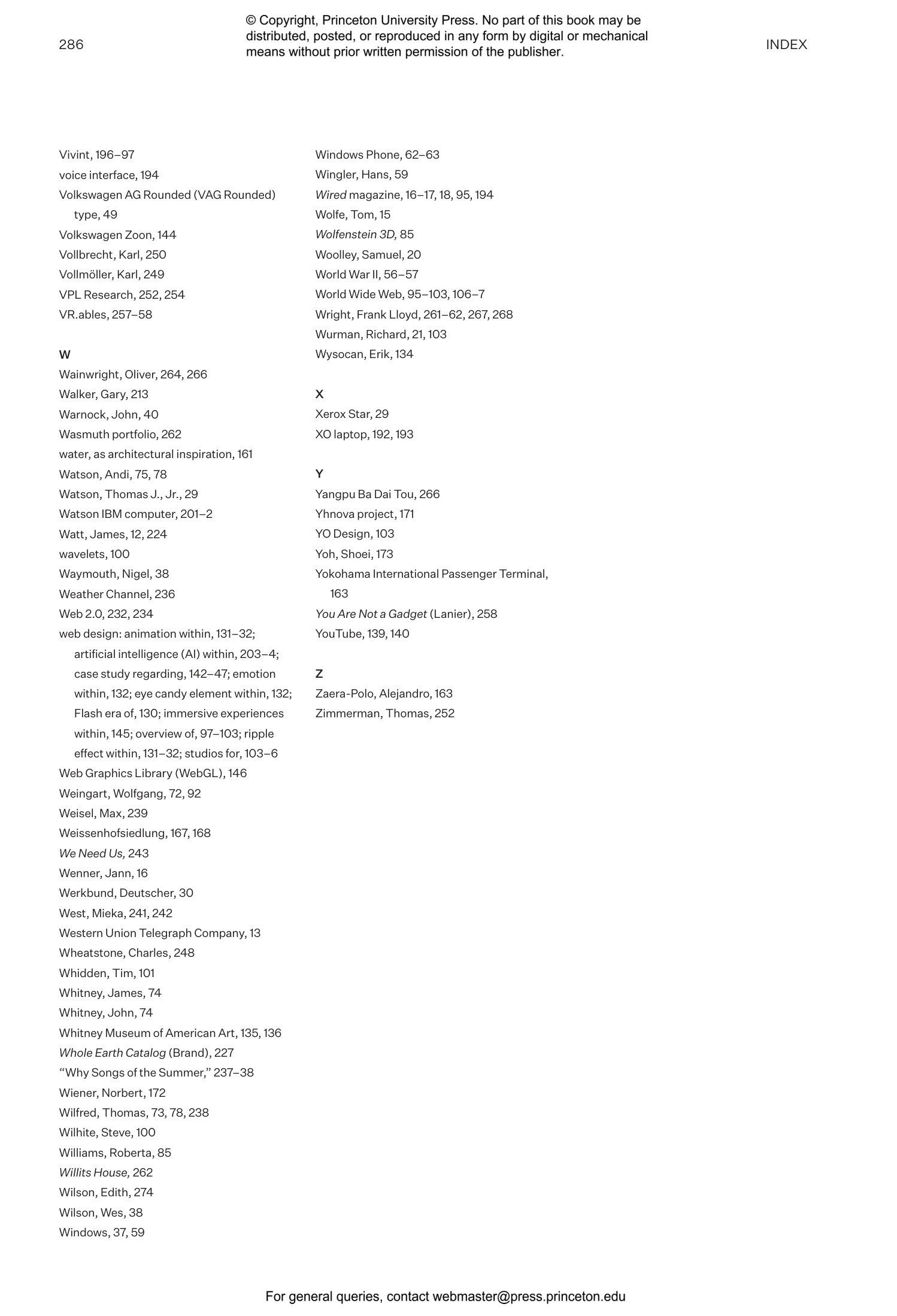Digital design has emerged as perhaps the most dynamic force in society, occupying a fluid, experimental space where product design intersects with art, film, business, engineering, theater, music, and artificial intelligence. Stephen Eskilson traces the history of digital design from its precursors in the nineteenth century to its technological and cultural ascendency today, providing a multifaceted account of a digital revolution that touches all aspects of our lives.
We live in a time when silicon processors, miniaturization, and CAD-enhanced 3D design have transformed the tangible world of cars and coffee makers as well as the screen world on our phones, computers, and game systems. Eskilson provides invaluable historical perspective to help readers better understand how digital design has become such a vibrant feature of the contemporary landscape. He covers topics ranging from graphic and product design to type, web design, architecture, data visualization, and virtual reality. Along the way, he paints compelling portraits of key innovators behind this transformation, from foundational figures such as Marshall McLuhan, Nam June Paik, and April Greiman to those mapping new frontiers, such as Jeanne Gang, Jony Ive, Yugo Nakamura, Neri Oxman, and Jewel Burks Solomon.
Bringing together an unprecedented array of sources on digital design, this comprehensive and richly illustrated book reveals how many of the digital practices we think of as cutting-edge actually originated in the analog age and how the history of digital design is as much about our changing relationship to forms as the forms themselves.
Stephen J. Eskilson is professor of art and design history at Eastern Illinois University. His books include Graphic Design: A New History and The Age of Glass: A Cultural History of Glass in Modern and Contemporary Architecture.
- Introduction
- One. The Visionaries
- Two. The Machines
- Three. Digital Type Design
- Four. Games and Experiments
- Five. Digital Print and Web 1.0
- Six. Digital Architecture I: Origins
- Seven. Digital Web 2.0
- Eight. Digital Architecture II: Parametrics and 3D Printing
- Nine. Digital Product Design: Sexy Plastic
- Ten. Algorithms and Artificial Intelligence
- Eleven. Data Visualization
- Twelve. Virtual Reality
- Coda. The Digital Future
- Acknowledgments
- Index
- Picture Credits
“This fantastic, elastic book offers a new view of design history. Discover the people, artifacts, and ideas that brought digital design to every facet of modern life.”—Ellen Lupton, educator and author of Design Is Storytelling and Thinking with Type
“Digital design defines the culture we live in today, so it’s strange that there’s almost no accounting for how this moment came to be. Digital Design: A History offers a welcome corrective, exposing the strange and gnarled roots of a discipline descended as much from a countercultural quest for enlightenment as a corporatist urge to own the future.”—Cliff Kuang, author of User Friendly: How the Hidden Rules of Design Are Changing the Way We Live, Work, and Play
“Eskilson’s book thoroughly probes and illustrates the history of the impacts of computers on design across an intriguing array of topics that include interfaces, games, typography, experimentation, data visualization, algorithms, AI, and VR. This historical evolution is traced back to predigital technologies, and ideas are positioned with an eye toward the critical. Digital Design is a considerable contribution to understanding the impacts of technology on design and culture.”—Louise Sandhaus, codirector of the People’s Graphic Design Archive
“Going against the usual hype of digital disruption, this book traces the ways the analog past haunts the present use of digital technology in design. Through compelling stories across a broad spectrum of digital design, this book provides an ambitious historical survey of an emerging concept that every designer and design researcher should read.”—Jiat-Hwee Chang, author of A Genealogy of Tropical Architecture: Colonial Networks, Nature, and Technoscience
